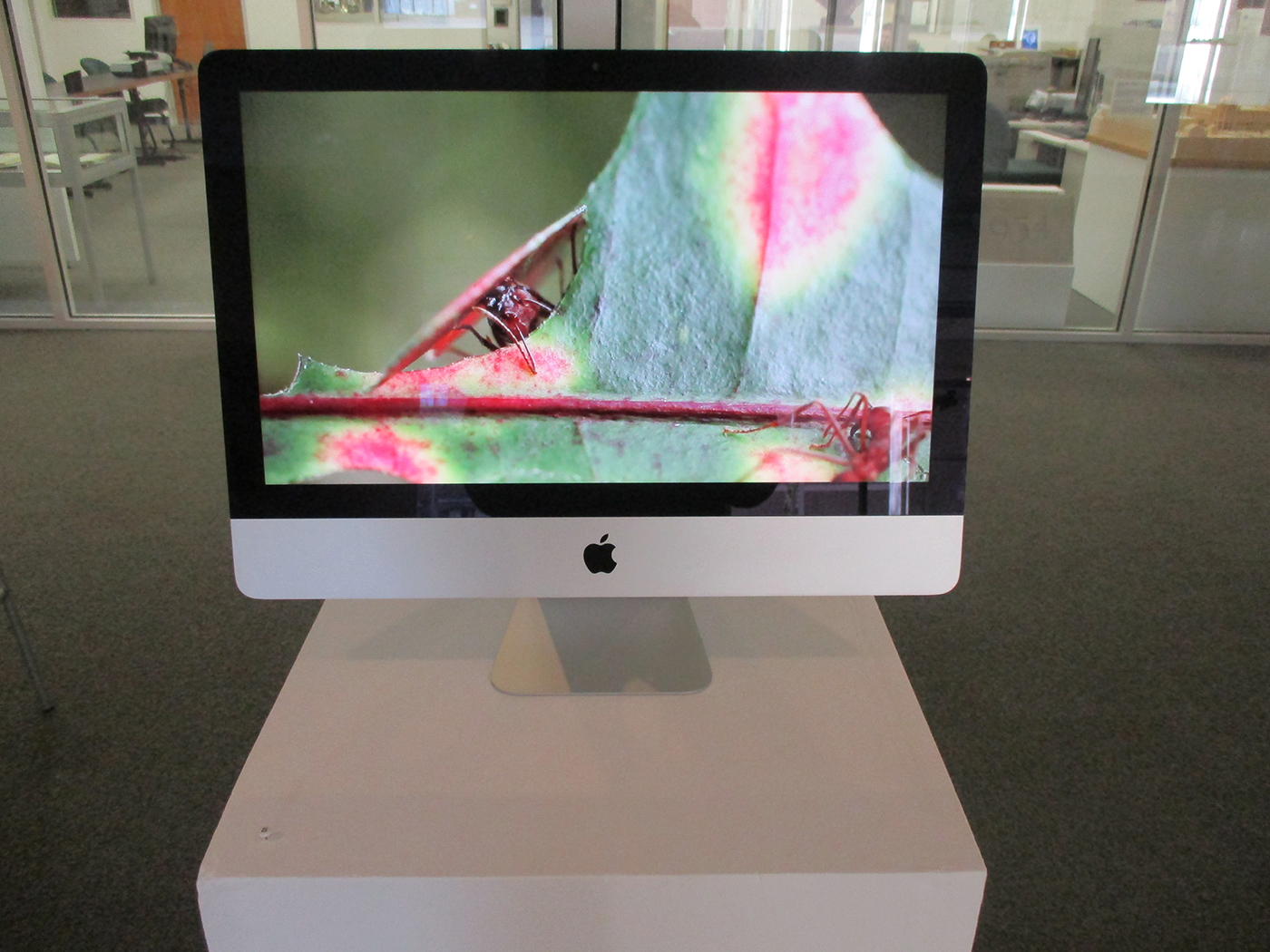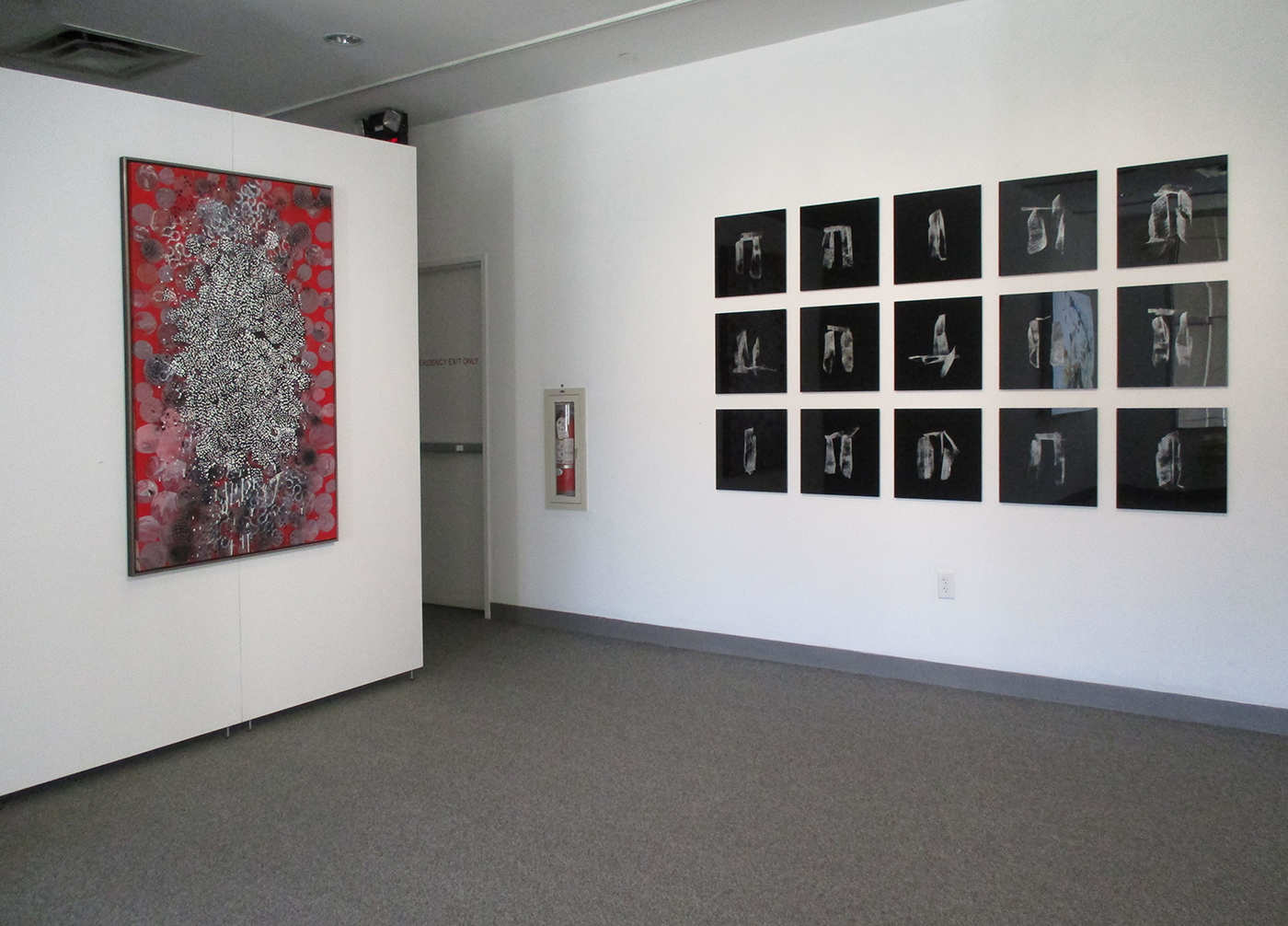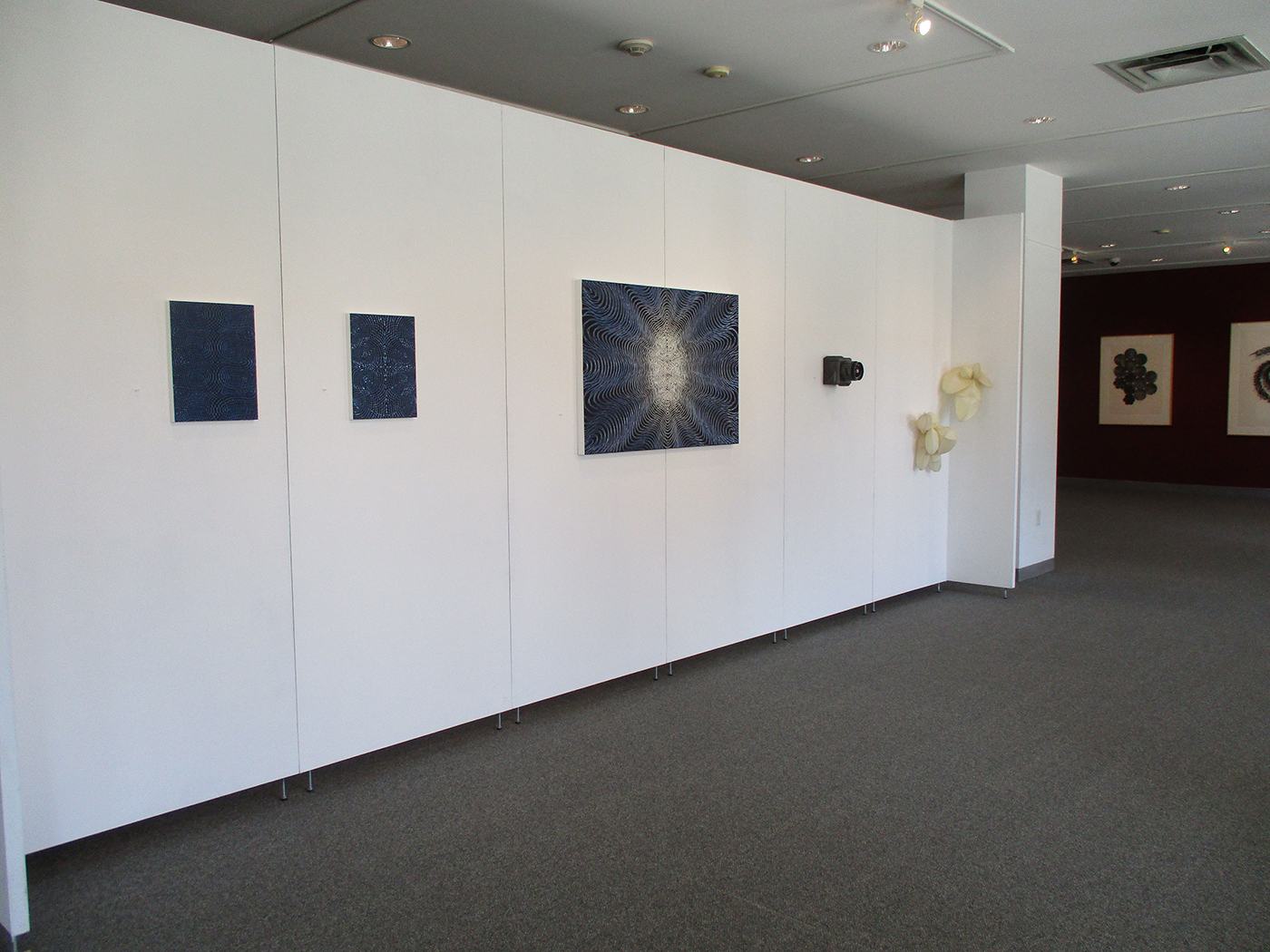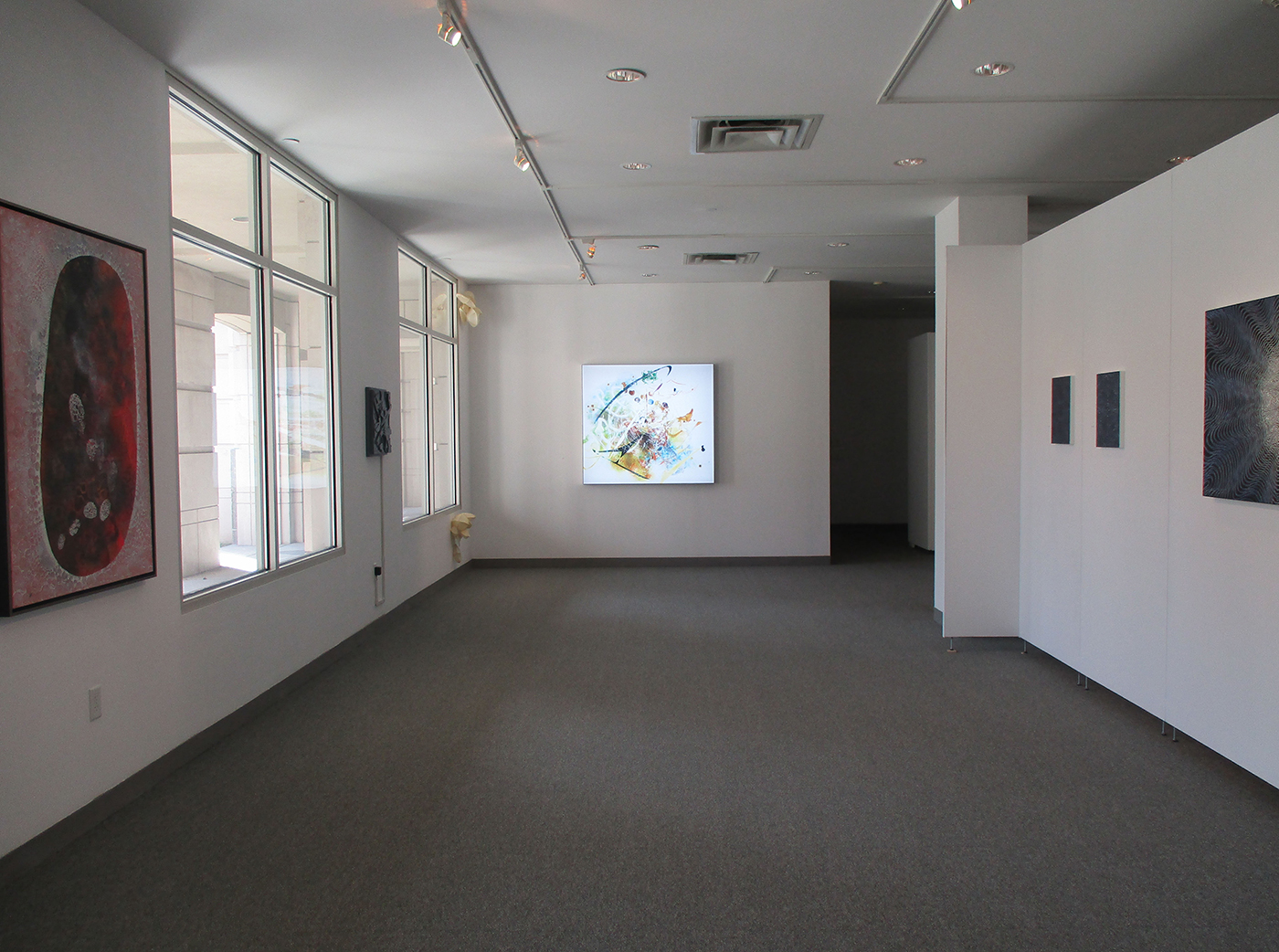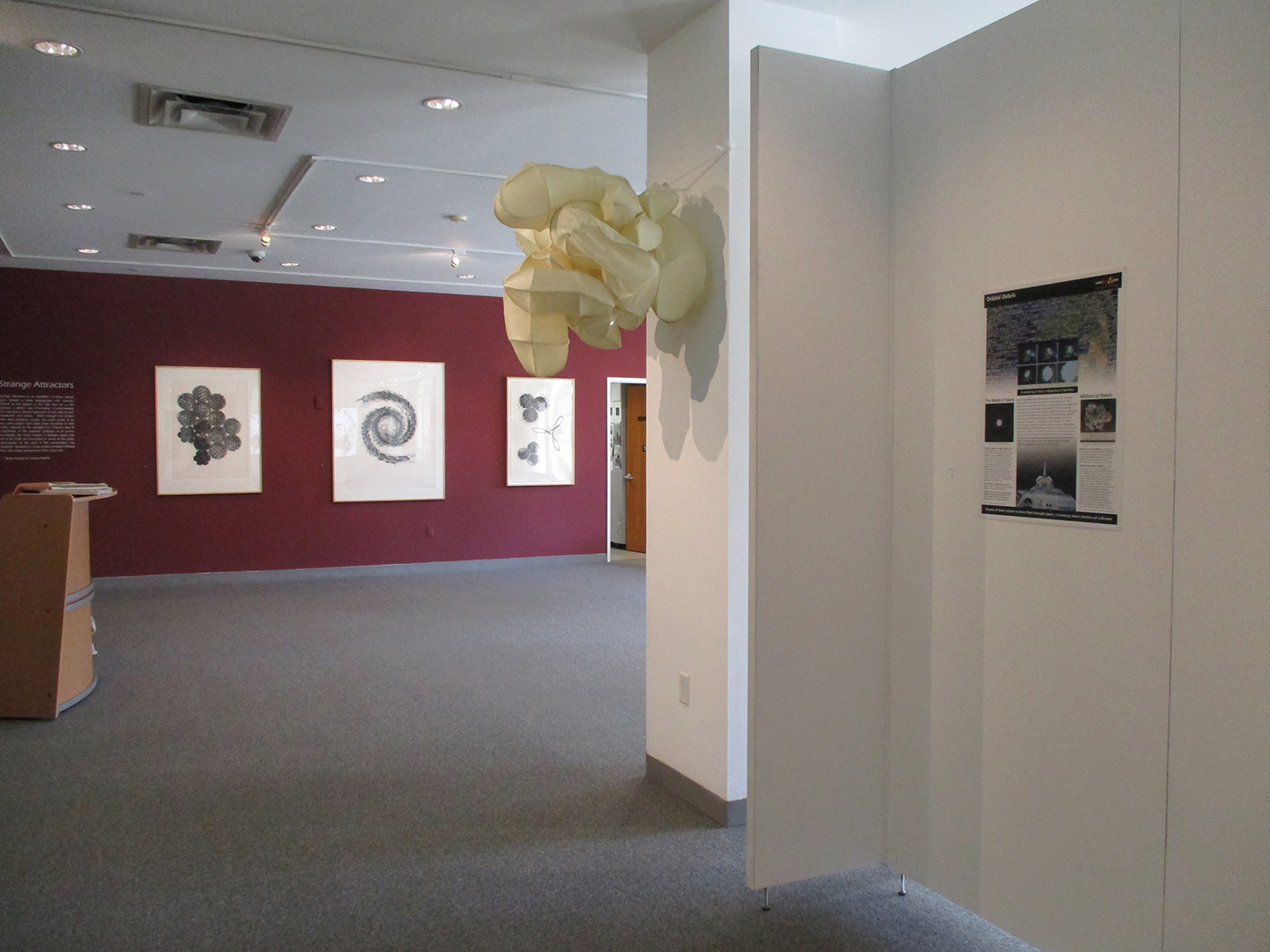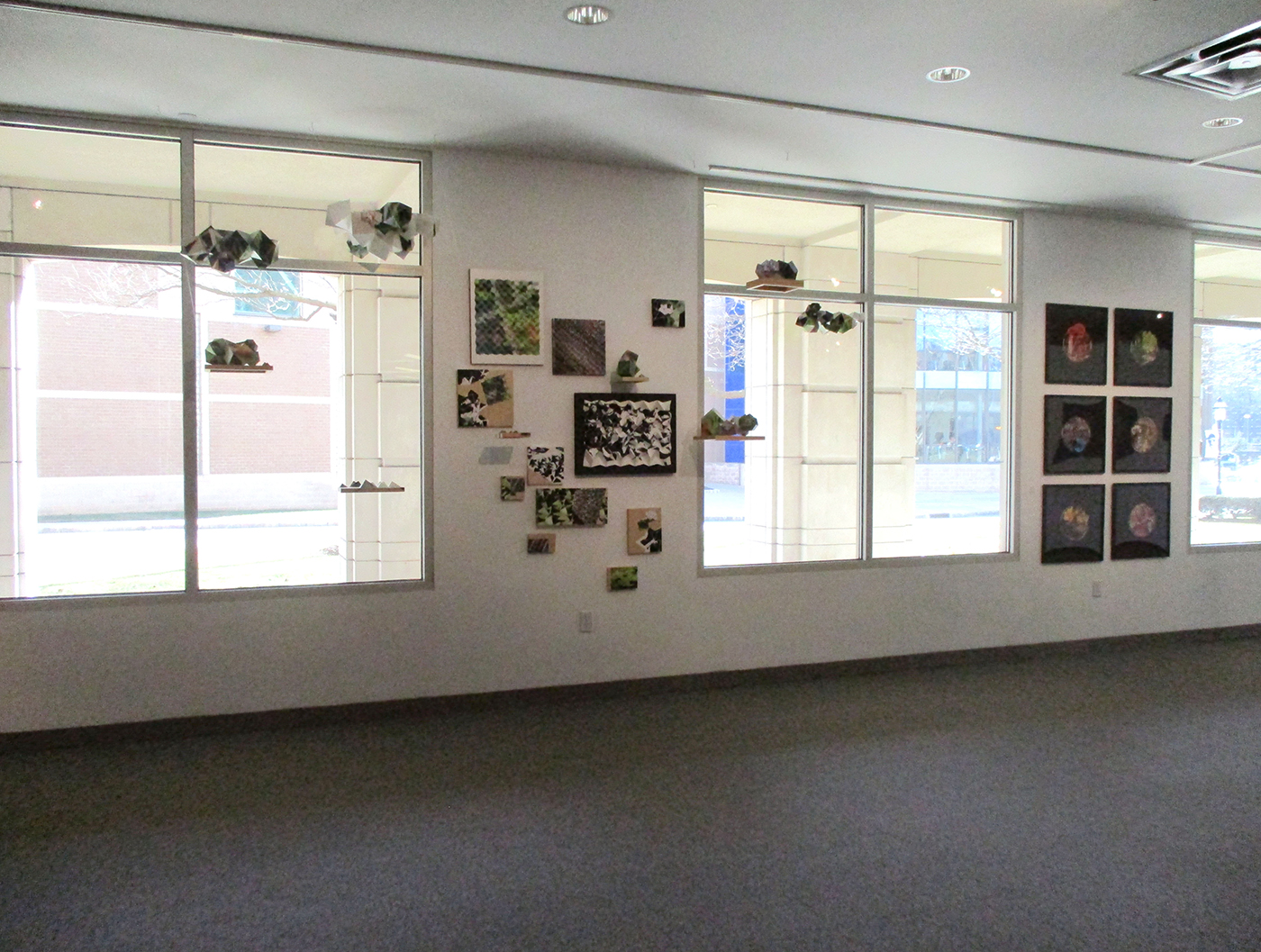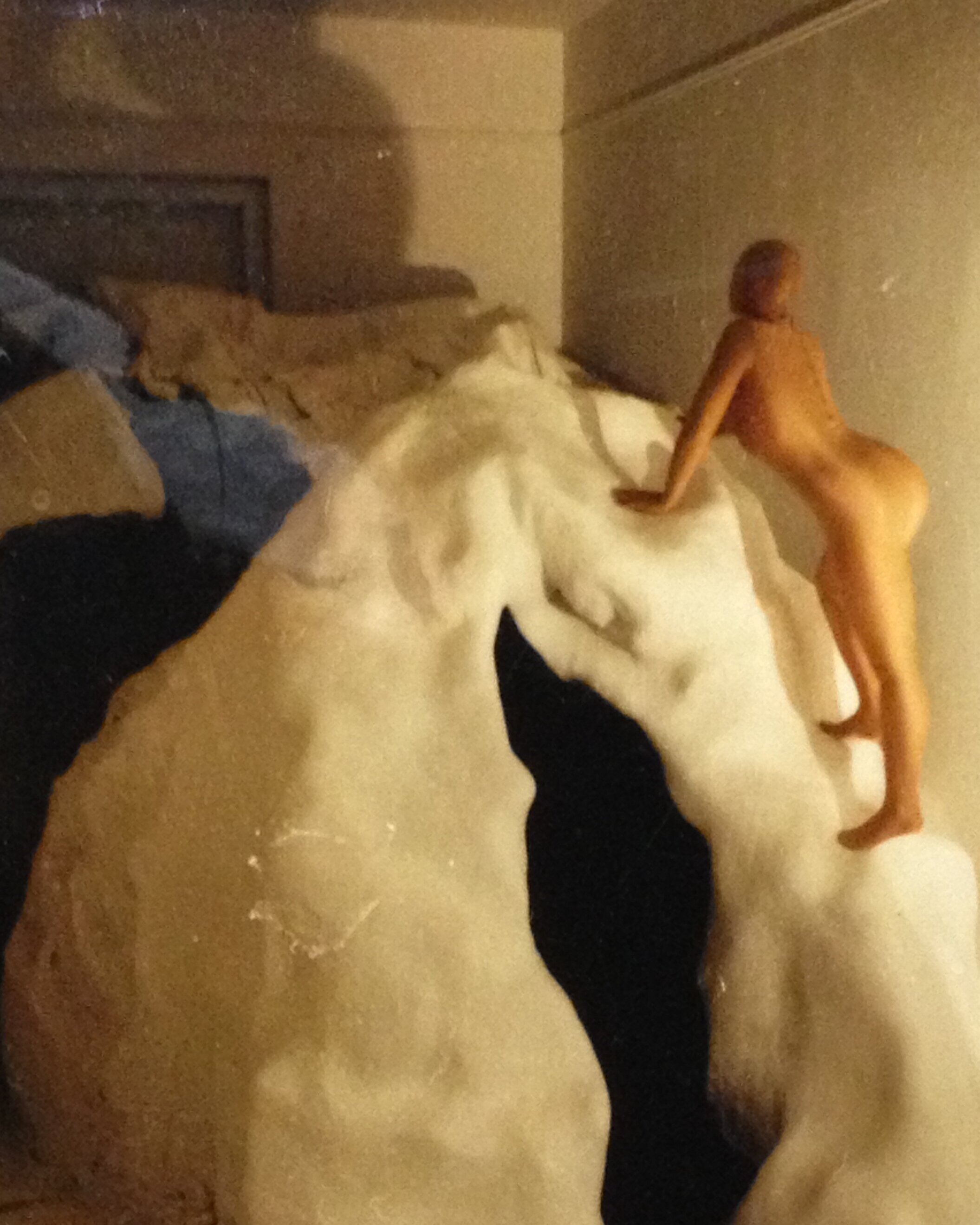STRANGE ATTRACTORS

Strange Attractors: Dialogues for the Century of Synthesis
By Taney Roniger
The following essay was written for the occasion of the opening of Strange Attractors, a group show now on view at the Walsh Gallery at Seton Hall University. The show will run through Friday, March 8th and will include a panel discussion to be held at the gallery in the first weekend of March. For information about the show and gallery please visit www.shu.edu/walshgallery. Battery Journal wishes to thank Seton Hall University for granting permission to reprint this piece.
In an age that’s witnessing the collapse of so many categories once held sacrosanct, a new sensibility is emerging in the arts. No longer content to operate within the confines of our field, many artists are moving out of the studio and into the world, often seeking out partnerships with practitioners from other disciplines. Disillusioned, it seems, with a long-exhausted formalism, and eager to reclaim the pursuit of truth rendered suspect by postmodernism, these post-disciplinary artists might be the aesthetic Argonauts of the new century. Among their number, artists engaged with science might be the vanguard.
Indeed, the number of artists in dialogue with science has grown exponentially over the last ten years. Talk of an “art-science convergence” ripples through academia, and judging solely by the profusion of literature on the subject something of a movement seems to be afoot. While some proponents proclaim the prospective benefits to both fields, others speculate that the two will eventually merge to form some kind of hybrid. Heady claims indeed. And yet for all the enthusiasm, there’s been very little in the way of critical dialogue on the subject. However we conceive of the convergence in question, what exactly does each field stand to gain? What do “sci-art” practitioners seek to accomplish?
Responding to this critical silence, I co-organized a conference with the CUE Art Foundation last fall hoping to achieve some measure of clarity on these questions. In addition to artists, our panel included two neuroscientists, a physicist, two curators, a philosopher, and an art historian. Over the course of eleven days we conversed online, covering a wide range of issues from our various perspectives. While in some sense we ended up with more questions than answers, we did arrive at some tentative conclusions. We also arrived somewhere wholly unexpected, and it is my hope that the present exhibition might inspire us to venture further. What follows, then, is both a reflection on our dialogue and an invitation of sorts to those eager to see it expanded.
Why art and science?
Most discussions about art and science showcase the similarities between the two fields. The priority of creativity and imagination, the shared spirit of inquiry, the use of certain investigative methods such as the heuristic and the stochastic: these are cited repeatedly as grounds for an alliance. What our conversation yielded, however, is that this model of fraternal twinship between the two fields is misguided; indeed, the real generative potential lies precisely in their differences. For while science is a discursive approach to truth whose aim is objective knowledge, art is a non-discursive approach that traffics in knowledge of a different order. Denying either the very thing that makes it valuable seems unlikely to lead to any novelty worth achieving. Understood as a collaboration between different epistemic orientations, however, an art/science partnership might serve as a valuable means of mutual augmentation. While misunderstandings will be inevitable, we might also see unexpected insights emerge from the tensions. Significantly, such a collaboration could also help clarify where each field reaches its limits.
But what exactly is the nature of the knowledge art produces? This is a crucial question, and one our dialogue spent considerable time exploring. While there were differing views on what art is and does, one thing unanimously agreed upon was the primacy of the poetic. As an allusive approach to truth that thrives on ambiguity and contradiction, visual art is a form of poetry whose force is primarily affective. A mode of cognition uniquely its own, it has access to regions of consciousness impenetrable by reason, and its singular strength lies in its transmission of what it finds there. While science is certainly informed by unconscious forces, the cognitive unconscious is art’s native language. And because the cognitive unconscious is rooted in the body, art is very much, unlike science, a somatic form of cognition.
With art understood not as product but as process, it becomes easier to approach the nagging question that plagues “sci-art” – namely, what exactly does art have to offer science? For what makes science attractive to art is more plainly evident (the proliferation of new imaging technologies, the wealth of discoveries unfolding across the various subfields, the universal allure of data visualization), but thus far the art-science relationship has been largely asymmetrical. On this our panelists had some compelling ideas. One neuroscientist suggested that art could play a role in helping scientists understand consciousness. Noting that science excels at taking things apart but founders when it comes to understanding whole systems, she pointed to artists’ natural propensity for holistic thinking. Another neuroscientist ventured that because all perception is limited by our biases, artists might help scientists expand the range of what they notice. And with a view toward the growing momentum of posthumanism, one artist suggested that art might serve as a cognitive mediator, connecting us with the larger consciousness we share with other species.
Nearing the end of our conversation, we turned to the subject of transcendence. I asked whether the art-science movement might have anything to say on the matter, art’s having had such a long and rich relationship with the subject. Here’s where our dialogue swerved in a new direction. There were some tentative speculations, but then one of our panelists pointed out that although science is associated solely with reason, it harbors an under-recognized dimension that some might call spiritual. Scientists, after all, are no strangers to awe—that profound feeling of humility before the immense wonder of the universe—and this may well be what draws them to science in the first place. Even when wholly absent of God, what is this feeling but a form of religiosity? Could art and science join forces to restore the religious sentiment to those in whom the supernatural is no longer tenable? Could recovering that sentiment lead to greater empathy for the natural world? The longing for communion is surely still with us, unrequited though it may be in our secular age. If art could lend its tremendous poetic power to the affective underpinnings of science, perhaps an art-science alliance might one day replace religion.
It’s a huge conjecture. But then, a time of global crisis is no time to think small. Indeed, many artists nurturing the post-disciplinary sensibility are doing so for exactly this reason. In a sweeping conjecture of his own, the biologist E.O. Wilson predicted that ours would be the century of synthesis, one in which the arts, humanities, and sciences would unite toward a common purpose. Rather than convergence, he called it consilience. With an eye toward realizing Wilson’s grand vision, Strange Attractors is a move in that direction from one corner of the visual arts. And although our purview is art and science, there’s no reason to believe it has to stop here. After all, without philosophy and religion, we’re a full two parts short of the great epistemological quadrumvirate. Perhaps it’s not too much to hope that by the end of our century all the disciplines will be in dialogue – and, finally, no longer as strangers.

